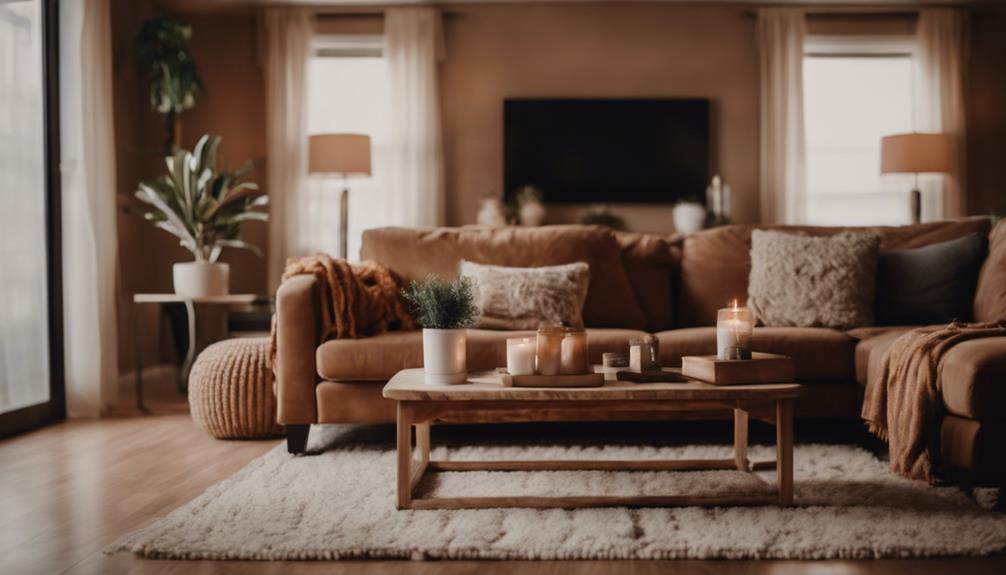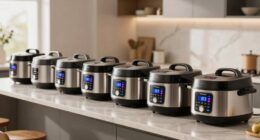Interior design is crucial as it can affect how you utilize and feel within the areas surrounding you. Talented designers create arrangements that maximize efficiency and cater to your lifestyle seamlessly. Colors play a significant role in influencing your emotions – warm colors may uplift your mood, while cool tones promote relaxation. The design of your space serves as a platform for expressing yourself, reflecting your personality and style. By optimizing space with intelligent furniture selections and storage solutions, every inch becomes valuable. Interior design professionals offer expertise in combining functionality with aesthetics, working alongside architects to turn dreams into reality. Your environment has a bigger impact on you than you may realize.
Key Takeaways
- Interior design optimizes spaces for efficiency and aesthetics.
- Colors influence emotions and behaviors in different environments.
- Allows self-expression, reflecting individuality and creativity.
- Techniques like furniture placement maximize functionality and flow.
- Professionals enhance spaces through expertise, creativity, and collaboration.
Importance of Functional Spaces
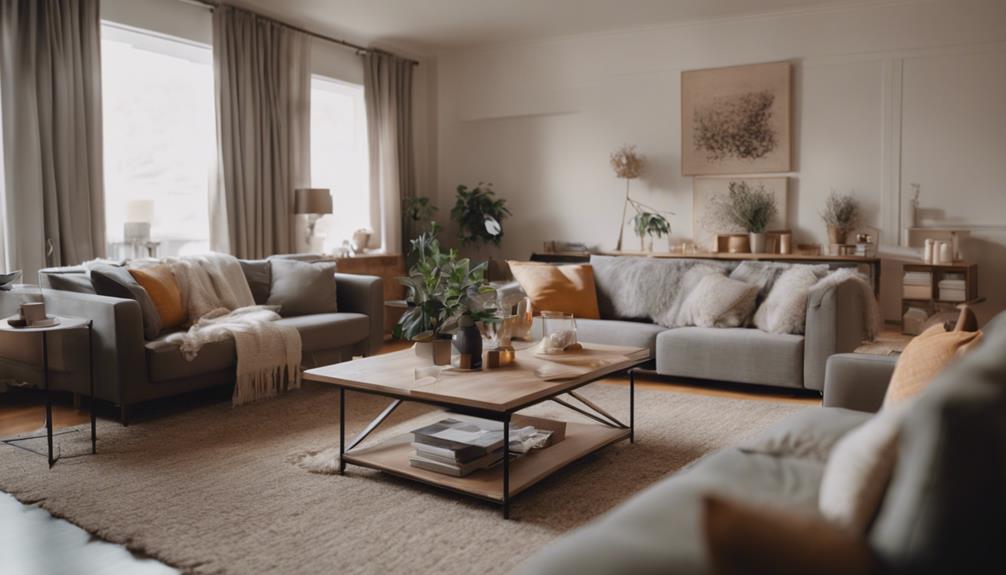
Functional spaces, crafted by skilled interior designers, are essential for maximizing efficiency and enhancing the overall user experience. When considering the layout of your interior, every decision made by an interior designer plays a pivotal role in how you interact with your space. Good design goes beyond aesthetics; it influences how you move through a room, how you feel in it, and how effectively you can accomplish tasks. Working with an interior designer allows you to make your space work for you, tailoring it to fit your lifestyle and needs perfectly.
Interior designers focus on the functionality of a space, ensuring that each design decision serves a specific purpose. By optimizing layout and flow, they create environments that not only look good but also support your daily activities. Whether it's arranging furniture to improve traffic flow or choosing the right lighting to enhance productivity, the impact of well-designed functional spaces on your well-being and productivity is significant.
Influence of Color on Emotions

Color plays a significant role in influencing emotions within interior spaces. Interior designers strategically utilize color psychology to evoke specific feelings in different environments. For instance, warm colors such as red and yellow are often used in fast-food restaurants to stimulate appetite and create a sense of urgency. On the other hand, calming colors like blues and greens are prevalent in spaces like yoga studios to promote relaxation and tranquility.
Self-Expression Through Design
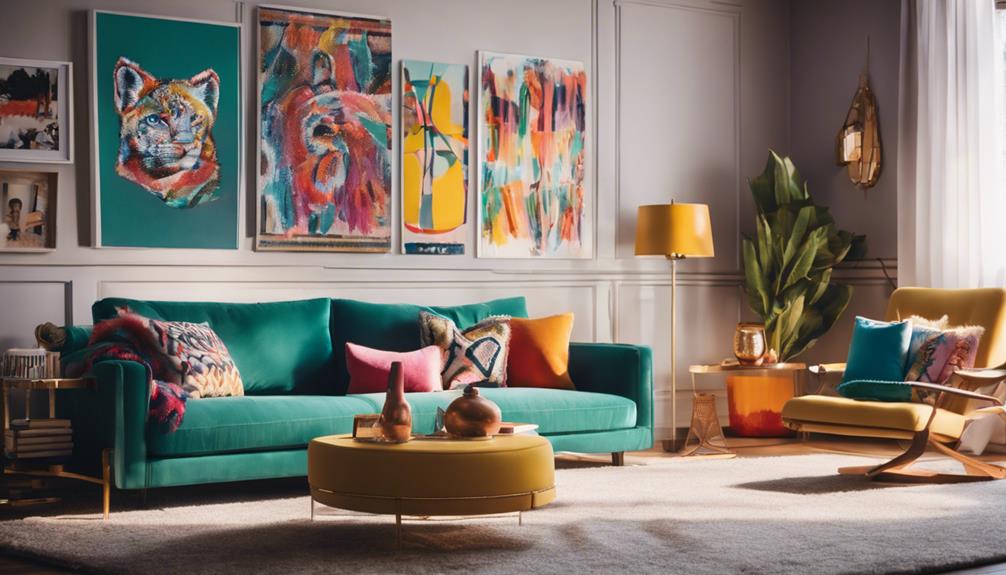
Expressing your individuality and personality through interior design choices is a powerful way to communicate your unique identity to others. When you make good interior design decisions, you showcase better contributions to your living or working environment.
The design of your space can reflect your values, preferences, and even your creativity. Visitors who enter your space can find insights into who you're based on the design elements you use. By using interior design services, you can enhance and highlight the positive qualities that make you stand out.
Interior design goes beyond just aesthetics; it's a form of self-expression and representation of your identity. Hence, it's important to find ways to use design to show the world who you're and what you stand for. Your space can be a canvas where you express yourself, make statements, and create a welcoming atmosphere that truly speaks to who you are.
Space Optimization Techniques
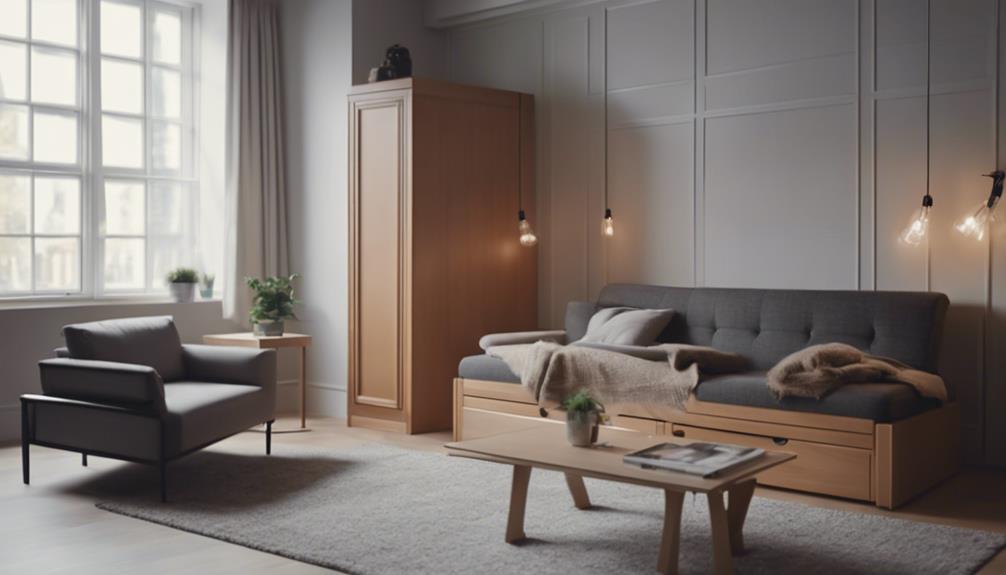
To maximize the functionality and flow within a given space, interior designers employ various space optimization techniques. By strategically placing furniture, implementing efficient storage solutions, and considering traffic flow, designers guarantee that every square foot in a design project serves a purpose. Tailoring these techniques to specific lifestyle needs results in spaces that are not only functional but also visually appealing. Let's explore further into some key space optimization techniques:
| Space Optimization Techniques | ||
|---|---|---|
| Strategic Furniture Placement | Efficient Storage Solutions | Traffic Flow Considerations |
These techniques aim to create an environment that is both organized and aesthetically pleasing, enhancing the overall usability of the space. Whether it's maximizing storage in a small apartment or creating an open layout for a family home, interior designers work diligently to meet the unique requirements of each design project. By implementing these strategies, spaces become more efficient, comfortable, and visually appealing, reflecting the lifestyle and preferences of the occupants.
Value of Interior Design Profession

To appreciate the value that interior designers bring to a project, consider their expertise in optimizing spaces for functionality and aesthetics while preventing costly errors. Interior designers have an impeccable eye for design, ensuring your space not only looks beautiful but also functions efficiently.
When you hire an interior designer, you're not just getting someone to pick out paint colors; you're getting a professional who can create detailed design plans, work collaboratively with architects and builders, and make sure your project stays on track. The feedback you provide is never shared without your permission, allowing for a collaborative process where your ideas and vision are carefully considered.
Interior designers add significant value to projects by enhancing success and client satisfaction through their creative vision and expertise. So next time you're considering a design project, remember that working with an interior designer can truly elevate your space and make your design ideas come to life.
Frequently Asked Questions
Why Is Interior Design so Important?
Interior design is essential as it maximizes spaces for both functionality and aesthetics.
Effective interior design prevents costly mistakes during construction or renovation projects. Designers play a key role in enhancing project quality and efficiency, leading to client satisfaction.
Interior designers collaborate closely with builders and architects to achieve excellent results in projects.
The average designer fee, around 8-10% of the total project cost, provides significant value in space optimization and design oversight.
Why Interior Design Styles Are Important?
When considering interior design styles, it's crucial to understand their importance. These styles, like modern, traditional, or industrial, aren't just about aesthetics; they also reflect your unique personality and preferences.
How Does Interior Design Impact People?
Interior design impacts you in more ways than you might realize. It affects your mood, behavior, and even relationships.
Well-designed spaces can boost your productivity, creativity, and overall happiness. By creating a comfortable and inspiring environment, interior design helps you feel more at ease and motivated.
It shapes how you interact with your surroundings, influencing your emotions and well-being every day. So, pay attention to the design around you—it's making a difference in your life!
What Makes Interior Design Special?
Interior design is vital because it combines functionality and aesthetics to optimize spaces. Designers collaborate with architects and builders to create harmonious living or working environments. Their expertise prevents costly mistakes, avoiding delays and budget overages.
Typically charging 8-10% of the total project cost, designers provide significant value by enhancing interior spaces. Their role is essential in transforming areas into efficient and visually appealing spaces, adding value to projects.
Conclusion
In summary, interior design plays a vital role in creating functional and aesthetically pleasing spaces that reflect your personality and emotions.
By understanding the impact of color, optimizing space, and utilizing design techniques, you can transform any room into a place that speaks to you.
So next time you're thinking about redecorating, remember the significance of interior design in making your space truly your own. Let your creativity shine through!
